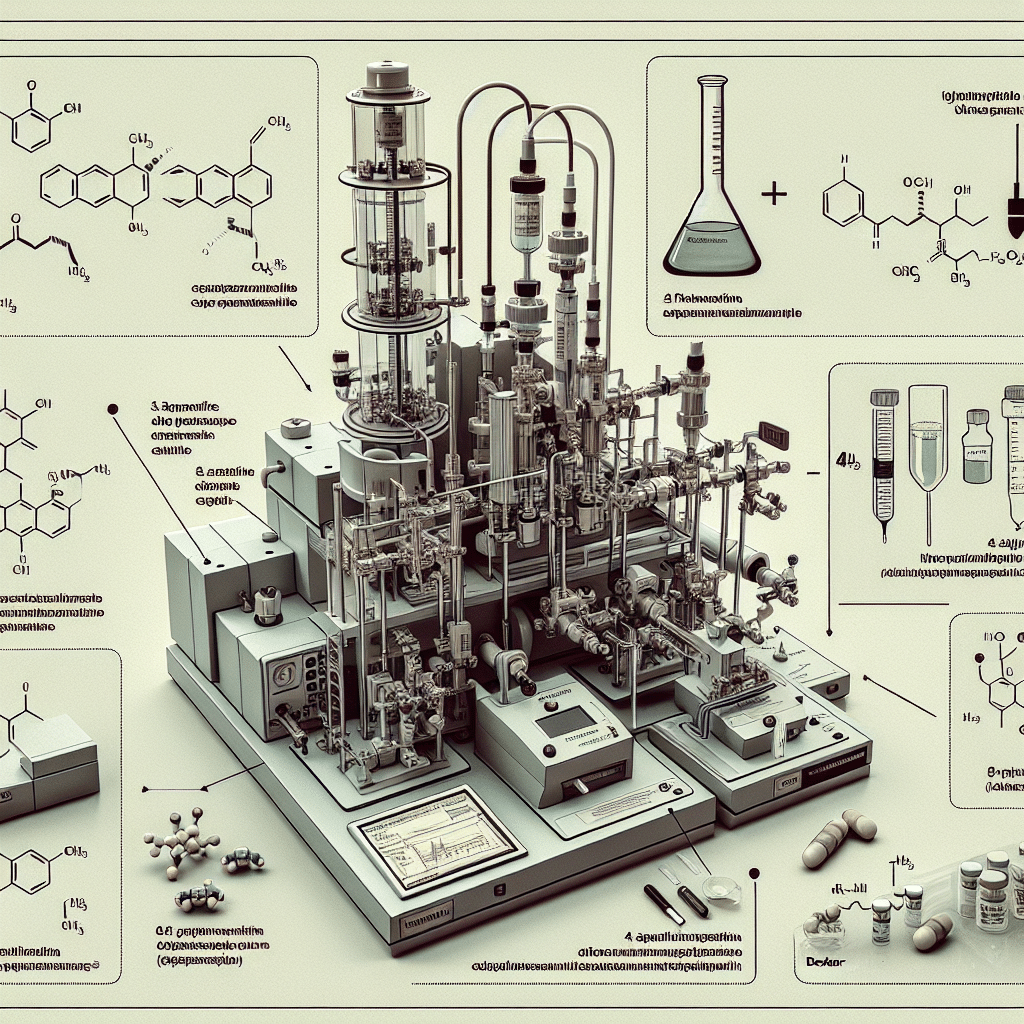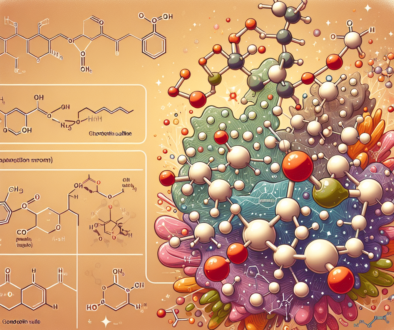HPLC Chromatograph for Acacetin: Detailed Guide
-
Table of Contents
- HPLC Chromatography for Acacetin Analysis: A Comprehensive Guide
- Understanding Acacetin and Its Importance
- Principles of HPLC Chromatography
- Setting Up HPLC for Acacetin Analysis
- Sample Preparation and Injection
- Method Validation and Calibration
- Interpreting HPLC Results for Acacetin
- Applications and Case Studies
- Challenges and Considerations
- Conclusion: Key Takeaways for HPLC Analysis of Acacetin
- Discover ETChem’s Protein Products
HPLC Chromatography for Acacetin Analysis: A Comprehensive Guide
High-Performance Liquid Chromatography (HPLC) is a powerful analytical technique widely used in the field of chemistry for separating, identifying, and quantifying compounds within a mixture. Acacetin, a flavonoid with potential therapeutic benefits, is one such compound that can be effectively analyzed using HPLC. This detailed guide will delve into the intricacies of using HPLC chromatography for acacetin analysis, providing valuable insights for researchers and professionals in the field.
Understanding Acacetin and Its Importance
Acacetin is a naturally occurring O-methylated flavone found in various plants, including the damiana (Turnera diffusa) and the black locust (Robinia pseudoacacia). It has garnered attention due to its potential health benefits, which include anti-inflammatory, antioxidant, anti-cancer, and cardioprotective effects. The accurate analysis of acacetin is crucial for research and development in pharmaceuticals, nutraceuticals, and food industries.
Principles of HPLC Chromatography
HPLC operates on the principle of liquid chromatography, where the sample mixture is passed through a column packed with a stationary phase. The mobile phase, which is a solvent or mixture of solvents, carries the sample through the column. Different compounds in the sample interact differently with the stationary phase and are separated based on their retention times.
Setting Up HPLC for Acacetin Analysis
To analyze acacetin using HPLC, several parameters must be optimized to achieve accurate and reproducible results. These include the choice of stationary phase, mobile phase composition, flow rate, detection method, and column temperature.
- Stationary Phase: A reverse-phase C18 column is commonly used for flavonoid analysis due to its non-polar characteristics, which provide good separation of acacetin from other flavonoids.
- Mobile Phase: The mobile phase often consists of a mixture of water and organic solvents like acetonitrile or methanol. The ratio and gradient profile are critical for achieving optimal separation.
- Flow Rate: The flow rate affects the interaction time between the sample and the stationary phase, influencing the resolution and analysis time.
- Detection Method: UV detection is typically employed for acacetin analysis, with a wavelength around 340 nm being optimal for flavonoids.
- Column Temperature: Temperature control can improve peak shapes and reproducibility. It is usually maintained at a constant temperature, often between 25°C and 40°C.
Sample Preparation and Injection
Proper sample preparation is essential for accurate HPLC analysis. Acacetin samples are usually extracted from plant materials using solvents like methanol. The extract is then filtered and possibly subjected to further purification steps before injection into the HPLC system.
Method Validation and Calibration
Validating the HPLC method ensures that it is suitable for its intended purpose. Parameters such as specificity, linearity, accuracy, precision, limit of detection (LOD), and limit of quantification (LOQ) must be determined. Calibration curves are generated using known concentrations of acacetin to quantify the compound in unknown samples.
Interpreting HPLC Results for Acacetin
The HPLC chromatogram displays peaks corresponding to different compounds. The peak for acacetin is identified based on its retention time and confirmed with a standard. Quantification is achieved by comparing the area under the curve of the sample peak to that of the standard.
Applications and Case Studies
HPLC analysis of acacetin has been applied in various studies to investigate its presence in herbal extracts and its pharmacokinetic properties. For instance, research on the bioavailability of acacetin in humans or its degradation under different storage conditions provides valuable data for product development and quality control.
Challenges and Considerations
While HPLC is a robust technique, challenges such as matrix effects, peak tailing, and method transferability can arise. It is crucial to address these issues through method optimization and robustness testing to ensure reliable results.
Conclusion: Key Takeaways for HPLC Analysis of Acacetin
In conclusion, HPLC chromatography is an indispensable tool for the analysis of acacetin. The method’s success hinges on careful optimization of chromatographic conditions, meticulous sample preparation, and rigorous method validation. By adhering to these guidelines, researchers can obtain precise and accurate data on acacetin content in various matrices, aiding in the advancement of scientific knowledge and product development.
Discover ETChem’s Protein Products
In addition to analytical techniques like HPLC, the quality of bioactive compounds such as proteins is also of paramount importance. ETChem offers a range of high-quality protein products that meet the needs of various industries. Their expertise in collagen production, including marine, fish, bovine, and chicken collagen, ensures that clients receive the best protein solutions for their applications.
About ETChem:
ETChem, a reputable Chinese Collagen factory manufacturer and supplier, is renowned for producing, stocking, exporting, and delivering the highest quality collagens. They include marine collagen, fish collagen, bovine collagen, chicken collagen, type I collagen, type II collagen and type III collagen etc. Their offerings, characterized by a neutral taste, instant solubility attributes, cater to a diverse range of industries. They serve nutraceutical, pharmaceutical, cosmeceutical, veterinary, as well as food and beverage finished product distributors, traders, and manufacturers across Europe, USA, Canada, Australia, Thailand, Japan, Korea, Brazil, and Chile, among others.
ETChem specialization includes exporting and delivering tailor-made collagen powder and finished collagen nutritional supplements. Their extensive product range covers sectors like Food and Beverage, Sports Nutrition, Weight Management, Dietary Supplements, Health and Wellness Products, ensuring comprehensive solutions to meet all your protein needs.
As a trusted company by leading global food and beverage brands and Fortune 500 companies, ETChem reinforces China’s reputation in the global arena. For more information or to sample their products, please contact them and email karen(at)et-chem.com today.





